Fire and Rescue Service Wildfire Operational Guidance
This guidance has been produced to give fire and rescue service personnel an additional understanding and awareness of the phenomenon of wildfire. It examines the hazards, risks and controls relating to Fire and Rescue Service personnel, the personnel of other agencies and members of the public at Incidents of wildfire. It also provides a point of reference for those who may be called upon to plan for wildfire events and for those incident commanders and personnel responding to such incidents.
8B5 Fire Development
Introduction
8B5.01 The wildfire environment is one that is subject to almost constant change and although some of these variations will be subtle, others will result in a dramatic and rapid change to fire intensity and rate of spread. To ensure that firefighters remain safe and effective it is imperative that they and their managers have an understanding of the circumstances that will bring about these changes. The appreciation of when, and where, fire behaviour is likely to alter will assist firefighters to apply suppression tactics safely and at times and at locations where they are most likely to succeed in bringing the fire under their control.
8B5.02 Changes will result in a fire becoming more or less responsive to its environment and increasing or decreasing levels of risk. If managers have an understanding of when and where these changes are likely to occur, they can apply this knowledge to the decision making process and adopt appropriate control measures within a suppression plan.
8B5.03 Understanding the changes in fire behaviour at a wildfire will also assist fire commanders to take the correct tactical decisions. Timing is crucial and taking full advantage of windows of opportunity where the fire is within the threshold of control of available resources is hugely important. The application of appropriate tactics and successful fire management techniques will ensure that changes are controlled within the governance of an effective incident command system and safety regime.
The Influence of Time and Space on the Wildfire Environment
8B5.04 A wildfire will burn over a period of time, on a landscape that provides the space over which the fire can move. The behaviour demonstrated by any wildfire is dependent on a number of important variables. Its movement across the landscape brings instability within the fire environment caused by changes to the available fuel, its combustibility and arrangement, the shape of the topography and the effects of weather. The changes that time and space bring to the fire environment, if properly understood, mean that the fire can be fought in a safe and effective manner.
Time
8B5.05 One of the main influences of time is the change it brings to the condition of the fuel and its combustibility during the event. The accumulated affect of solar radiation throughout the day can have a significant impact on temperature, relative humidity, wind speed and the moisture content of the fuel. Another change that time may bring is to the general weather pattern bringing stable or unstable weather conditions. Time can have a positive or negative effect on fire development throughout the day and this will bring both advantage and disadvantage to firefighting operations.
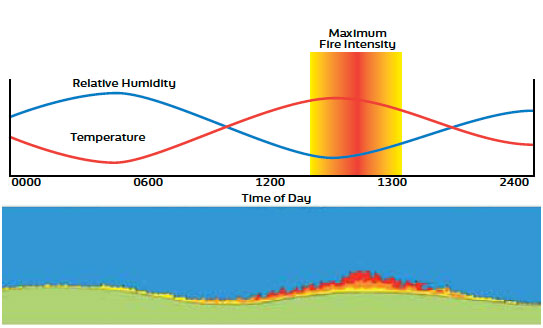
Fig. B5.1 Diagram showing the changes brought about by variations in temperature and relative humidity throughout the day. As temperature rises relative humidity falls resulting in increased fire intensities
Space
8B5.06 Likewise, the space in which the fire is burning brings changes to the shape of the landscape altering the fire's alignment with wind and slope and bringing a variation in fuel types, its loading and arrangement. The availability of fuel, its type and its horizontal and vertical arrangement obviously impacts on how readily fire will develop, however there are other variables that are important to consider. For instance, as a fire changes its location and moves across the landscape, topographical and climatic conditions will work for and against the fire altering its intensity and speed.
Explaining Fire Growth
8B5.07 A fire burning in uniform fuels will normally start at a single point of ignition and the resulting flames firstly consume the surrounding fine fuels. As the fire develops, convection currents draw the flames towards the centre and away from the surrounding fuel. Fire development at this stage is mainly caused by flame contact with any unburnt fine fuels.
Equilibrium
8B5.08 In the absence of any alignment with wind or slope the convection plume will continue to dominate early fire development, the fire will burn more or less equally in all directions and most of the heat will be drawn into the convection plume and lost to the atmosphere. This situation will continue until there is a variation in the fuel or its combustibility, or where the fire finds alignment with wind or slope.
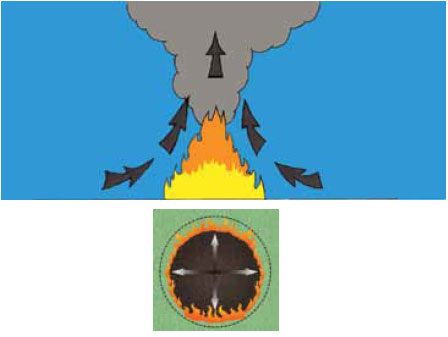
Fig. B5.2 Illustration of the effect of the convection plume in the early stages of fire development. A fire in a state of equilibrium burning with equal intensity in all directions
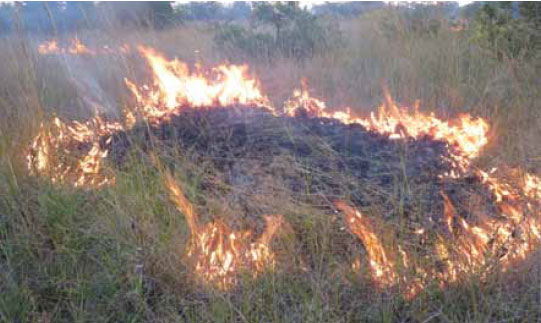
Photo B5.1 A fire in relative equilibrium
The Loss of Equilibrium
8B5.09 When the outer edge of a fire is supported by wind or slope and the strength of this alignment is stronger than the convection force created by the fire, this equilibrium is lost. The part of the fire that finds most alignment with wind or slope will overcome the influence of the plume and the flames at this part of the fire will angle towards the fuel, the flames at the rear part of the fire are bent away from the fuel.
8B5.10 As a result, the fuels at the front of the fire are subjected to more preheating and the fire is able to penetrate these with more ease, increasing fire intensity and rate of spread. The fire at the rear has less interaction with the fuel and activity is reduced. The shape of the fire footprint is likely to change and depending on the strength of alignment may become elongated as the front part of the fire develops what is termed to be a head.
8B5.11 Wind normally drives a fire in the direction it is blowing and has a strong influence on the fire's outer shape; it supports the head fire but restricts fire development on the flanks and tail. As wind speed increases this effect dominates fire spread providing more support to the head and less to the tail and flanks. The head fire will be the part of the fire that has maximum alignment; the flames can be significantly angled towards, and sometimes be brought into contact with, the fuel, thus increasing the rate of spread and intensity. The flames and heat generated at the tail part of the fire are pushed away from the fuel and intensity is reduced, sometimes to a point where the combustion process ceases.
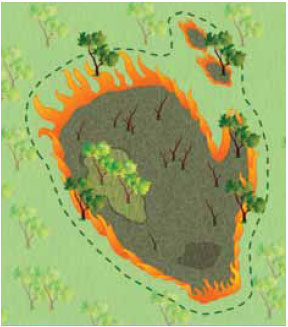
Fig. B5.3 Showing a typical fire pattern once equilibrium is lost
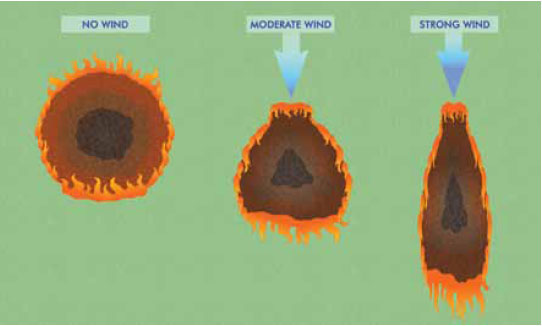
Fig. B5.4 The effect of wind on the shape of the fire
Fire Growth
8B5.12 A fire spreading with the support of wind will burn into the available fuel with different intensities around its perimeter. The following diagram shows an elliptical fire pattern.
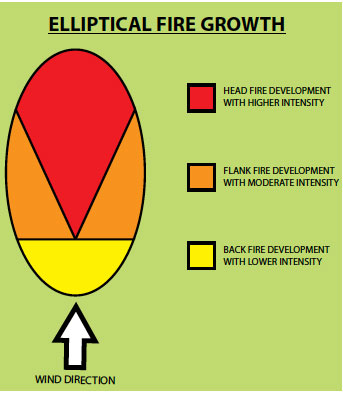
Fig. B5.5 Elliptical fire development where the fire burns with different intensities around its perimeter, depending on its alignment with wind
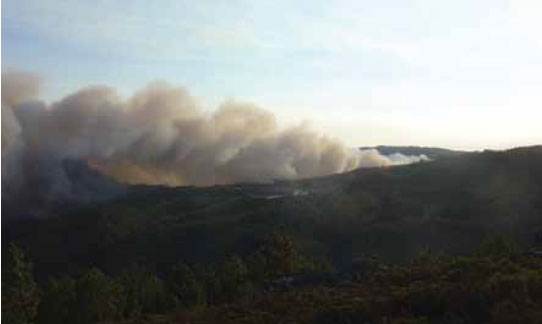
Photo B5.2 A fire being supported by wind
The Parts of a Wildfire
The Head Part of a Fire
8B5.13 The head of the fire has the most sustained alignment and as a result is the fastest moving and most intense part of the fire. Depending on the fuel and its arrangement, the head fire is the part of the fire that has the greatest flame length, flame depth and rate of spread. It is essential to understand that fire intensity can change around the fire perimeter, and any part of a fire that aligns with wind or slope can potentially develop head fire behaviour.
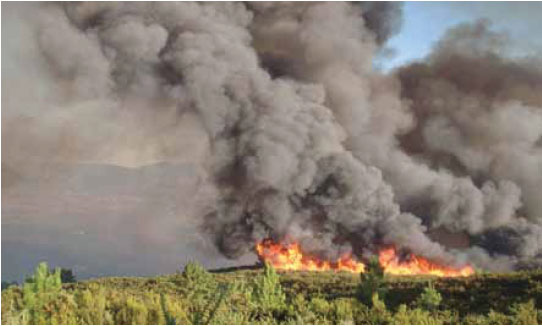
Photo B5.3 Showing a well-developed head fire. Note the flame angle/length etc
The Flanks of a Fire
8B5.14 The sides of the fire are termed to be the flanks and these burn outwards into the unburnt vegetation. This results in the flanks having less alignment than the head, normally reducing their intensity and rate of spread. Flank fire intensity nearest the head is normally more intense, particularly where the flanks meet the head which is known as the 'shoulder'.
8B5.15 The flanks of a fire can make up most of the fire perimeter, and therefore there may be variations in fire activity due to changes in fuels or topography. This can lead to a different fire behaviour being demonstrated by each flank. This can be explained by the fact that usually one side of the fire will have better alignment or be burning in more supportive fuel types. It is important that attending personnel understand which is the left flank, and which is the right flank of a fire. This is best explained by imagining that you have taken position behind the fire, with the head moving away from your position. The left part of the fire is to your left and the right part to your right.
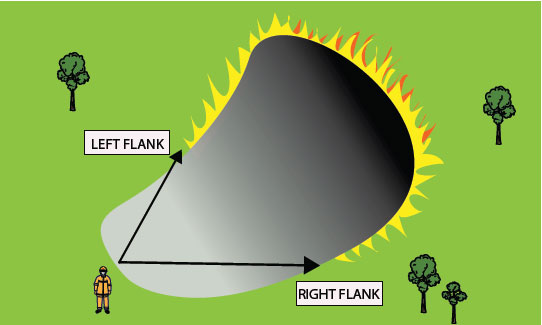
Fig. B5.6 Showing the left and right flanks of a fire
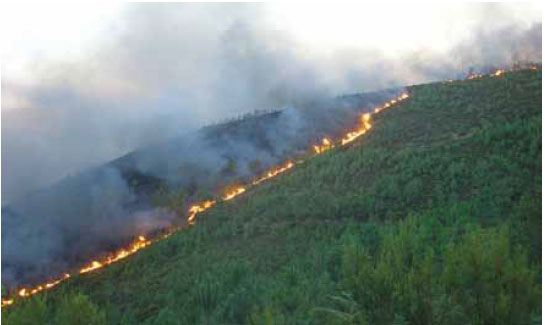
Photo B5.4 A flank part of a fire
The Tail Part of a Fire
8B5.16 The back part of the fire is called the tail and this part of the fire is where there is the least amount of fire spread. Usually the flames at the tail are being bent towards the already burnt fuel and the fire moves into the vegetation against the alignments that are working in the favour of the head fire. The tail fire is potentially the slowest moving part of the fire with the shortest flame length. When the tail is backing against a strong wind or steep slope it can self extinguish. Tail fires usually demonstrate low amounts of fire activity but it is important that they are recognised as a significant risk, if they burn into areas that are more supportive a significant and rapid change in fire behaviour can occur.
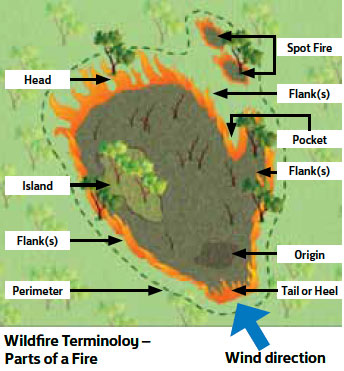
Fig. B5.7 An illustration showing the parts of a fire
Wind as an Alignment Force
8B5.17 Wind is a major alignment force and supports fire development, it does this in a number of ways including:
Providing the Fire with Added Oxygen
8B5.18 This assists in the combustion process and adds to the fires intensity, allowing the fire to become hotter resulting in more radiated heat being transferred to the unburnt fuel in its path and an increase in rate of spread.
Tilting the Flame and Pushing it Closer to the Fuel
8B5.19 Without the support of wind the heat generated by the flames and fire plume is mostly lost to the atmosphere. When a fire is burning in alignment with wind the flame is pushed forward towards the fuel, the flame angle then allows more radiated heat be transferred to unburnt fuel accelerating fire development. In extreme cases the wind can be bent over to a point where the flame is in direct contact with the fuel.
Driving the Smoke Plume into the Unburnt Fuel
8B5.20 With the support of wind the convection plume maintains more contact with the ground preheating and drying out the fuel in the fire's path.
Drives the Fire and Gives it Direction
8B5.21 The accumulative effect of wind is that, some areas of unburnt fuel surrounding the fire are preheated and become dryer, the fire is then able to burn into these with more speed creating more intensity.
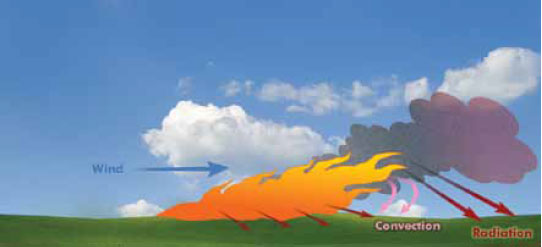
Fig. B5.8 Illustration of the effect of wind fire spread and intensities
Slope as an Alignment Force
8B5.22 Slope is also a major alignment force that supports fire development; it does this in a number
of ways including:
Bringing the Fuel Closer to the Flame
8B5.23 The slope alters the angle at which the fuel is presented to the flame, the steeper the slope the closer the fuel moves towards the flame. This allows more radiated heat to be transferred to the unburnt fuel; increasing rate of spread and fire intensity.
Increasing the Impact of the Convection Plume on Unburnt Fuels
8B5.24 In the absence of slope substantial amounts of heat generated by the convection plume is lost to the atmosphere, when a fire moves upslope the convection plume is able to pass nearer to the surface and preheats and dries out the fuel in the fires path potentially increasing the rate of spread and fire intensity.
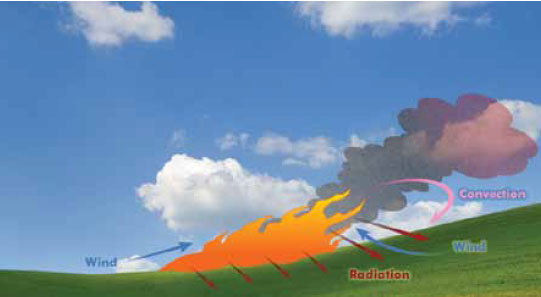
Fig. B5.9 Showing the effect of slope on fire behaviour
Aspect as an Alignment Force
8B5.25 One of the main reasons wind and slope are predominant factors within the wildfire environment is that it enhances the ability of the fire to interact with vegetation, preheating takes place altering the chemistry of the fuel and surrounding atmosphere.
8B5.26 A similar process takes place in fuels that are in aspect or where they are located on the landscape that is oriented towards the sun. In these areas the drying environment can be accelerated increasing the combustibility of the vegetation.
8B5.27 Solar radiation has a cumulative affect so areas of the landscape that receive sunlight on a daily cycle, over longer periods, are likely to be much dryer than areas that do not and fires in these areas will burn with more intensity.
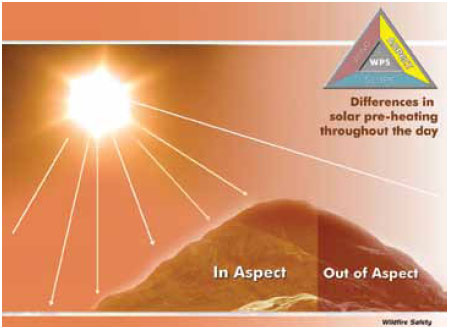
Fig. B5.10 Showing the effect of the shape of topography on surface preheating
Changes to Alignment
8B5.28 The parts of a fire that find alignment with wind, slope or aspect are those that will increase their intensity and rate of spread. Where these alignments are strong, then it is probable that a head fire will develop. In areas of the fire where there is little or no alignment fire behaviour is likely to be significantly less.
8B5.29 Consideration should be given to the fact that although the head fire normally displays the most fire activity, it is not necessarily the most dangerous part of the fire. The higher risk locations are generally those where there is a change in alignment or strength of alignment that allows a fire to rapidly and sometimes unexpectedly increase its intensity and rate of spread.
8B5.30 These changes can occur anywhere around the fire perimeter, an example being where the wind changes direction and aligns itself with a part of the fire that had previously had little or no alignment. It is important that fire officers do not concentrate their assessment of risk only at locations that currently have the highest fire intensities; they must understand that the fire's future potential development may occur elsewhere, even at parts of the fire where it appears to be quite inactive.
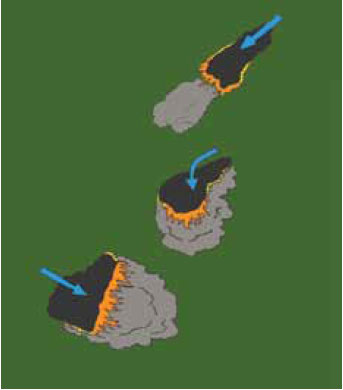
Fig. B5.11 Illustration of wind change on a flank fire
Flame Description
Flame Height
8B5.31 The height of the flame is measured vertically from ground level to the top of the flame.
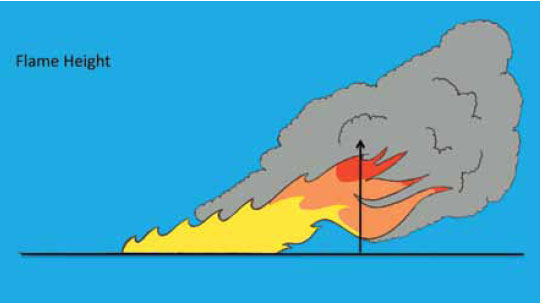
Fig. B5.12 Showing flame height
Flame Angle
8B5.32 The angle of the flame is measured from the horizontal, and gives the incline of the flame indicating the strength of the fire's alignment with wind and slope and the amount of preheating that the flame can bring to bare on unburnt fuels.
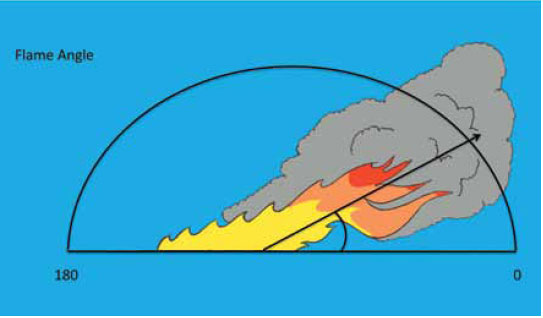
Fig. B5.13 Showing flame angle
Flame Length
8B5.33 The flame length is the measurement taken from the base to the tips of the flame, irrespective of the flame angle.
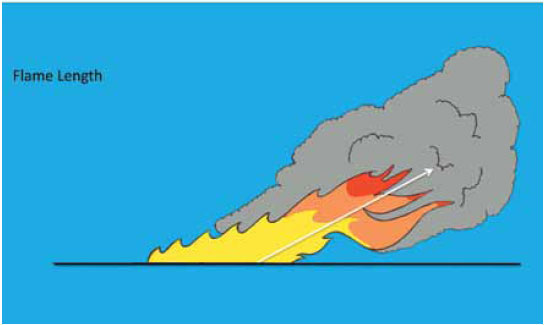
Fig. B5.14 Showing flame length
Flame Depth
8B5.34 The flame depth is a measurement of the total area of continuous burning fuels taken from the front part of the fire to the rear most part of the flaming zone. It should not be extended to individual and separate fires burning outside the flaming zone.
Fire Front
8B5.35 The fire front is the area of the fire that is at the foremost part of the flaming zone and is where the available fine fuels are consumed. This usually results in the fire demonstrating its most intense behaviour and the longest flame length.
Flaming Zone
8B5.36 The flaming zone is the total area of burning fuels measured from the front of the fire to the rear most part of the fire.
Rate of Spread
8B5.37 The rate of spread refers to the movement of the fire across the landscape and is normally measured in metres per hour. The rate of spread is not limited to the forward motion of the head fire but can be used to describe the outward movement of the flanks or tail. Rate of spread is not a constant and the alacrity of movement will vary over time and within the space the fire is burning. Wind, slope and aspect will influence rate of spread as will the type and arrangement of the fuels the fire has access to. The amount of fine fuels within the fuel loading is important as fire will move much faster through finer fuels compared to coarser ones.
8B5.38 Fire spread can also be measured vertically as the fire travels upwards between the ground, surface and aerial fuels within its arrangement.
Depth of Burn
8B5.39 The depth to which a fire penetrates into the fuel bed, this is normally into surface and ground fuels.
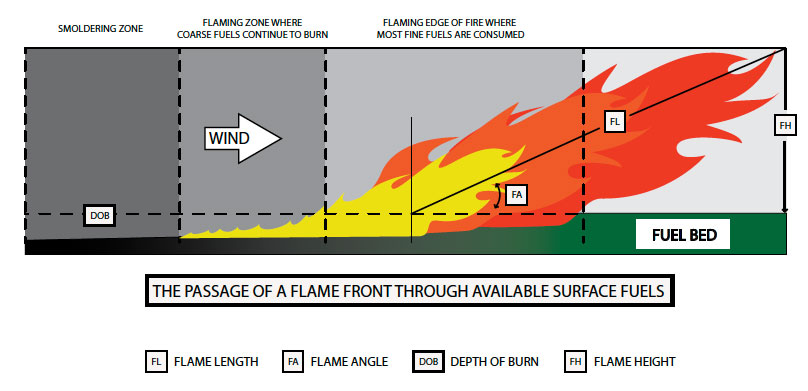
Fig. B5.15 Showing a representation of a head fire spreading through fuels on level terrain
Types of Fire
8B5.40 The fire type is normally described making reference to the fuel layer it is burning in, for example a fire burning in the surface fuels would be referred to as a 'surface fire', it is the same for fires burning in ground, elevated or aerial fires.
8B5.41 Fires that demonstrate more extreme fire behaviour have names that are more descriptive of their behaviour such as 'Torching', 'Spotting' or 'Crowning' these are covered in Section 11.13 'Extreme Fire Behaviour'.
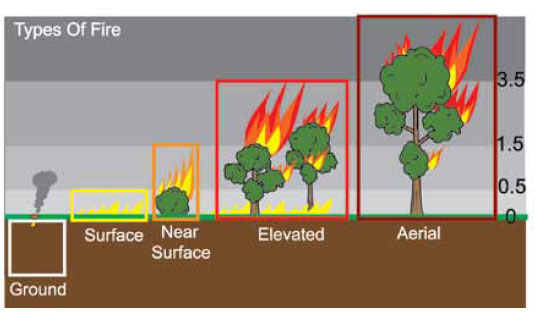
Fig. B5.16 Showing the different types of fire
Extreme Fire Behaviour
8B5.42 Extreme fire behaviour can result from a single, or a number of situations within the fire environment that are likely to cause fire activity to reach dangerous proportions.
These include:
- High fuel loading, particularly in fine fuels
- The existence of strong ladder fuels
- Fire aligned with a strong wind
- Fire aligned with a steep slope
- High temperatures
- Low humidity
- Drought conditions
- High percentage of dead fuels within the fuel complex
8B5.43 Extreme fire behaviour can be demonstrated sporadically or sustained over long periods of time. It is imperative that these events are predicted at a local and tactical level and managed within the suppression plan. The causes of probable extreme fire behaviour are listed above but the indicators that these events are actually taking place are:
- A surge in fire severity
- Pulsating flames
- Very dark smoke
- Separate fires occurring outside the fire edge (spotting)
- Increased flame height or length
- Ignition of aerial fuels in the canopy
- An increase in surrounding air movement
8B5.44 A good practical indication as to whether fire behaviour will become extreme is the 30-30-30 rule. The three figures are the measurement of wind speed in km/h, temperature in centigrade and relative humidity as a percentage of air moisture content. If the wind speed is ≥ 30km/h and the temperature is ≥ 30°C and the RH is ≤ 30%, then any wildfire (depending upon the fuel) will always demonstrate extreme fire behaviour and intensity.
High individual measurements in any of these areas can also stimulate conditions that will result in dangerous fire behaviour.
The Junction Zone Effect
8B5.45 The term junction zone is used to describe the increase in fire activity caused by two fires, or flaming parts of a fire, coming together. This is caused by the in-drafts generated by each fire drawing them towards each other, this increases the speed at which the fuel is consumed and the subsequent intensity and rate of spread. Sometimes this also results in a stronger fire plume that can generate increased spotting.
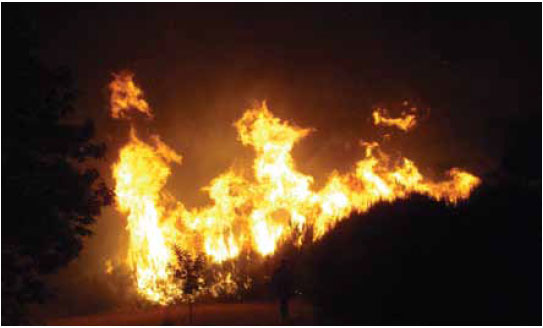
Photo B5.5 Two fires coming together
Spotting
8B5.46 Spotting is a term that is commonly used to describe a particular type of fire behaviour which can result in a very dangerous form of fire propagation. Burning embers of fuel are carried upwards by the convection plume or wind and then distributed amongst areas of unburnt fuel ahead of the main fire. The area immediately under the smoke plume is particularly vulnerable to localised spotting, although it must be recognised that burning material can be carried considerable distances and result in significant secondary fires which can become the primary means of the wildfire spreading across the landscape.
8B5.47 Spotting activity can also breach control lines or threaten escape routes of personnel working on the fire ground.
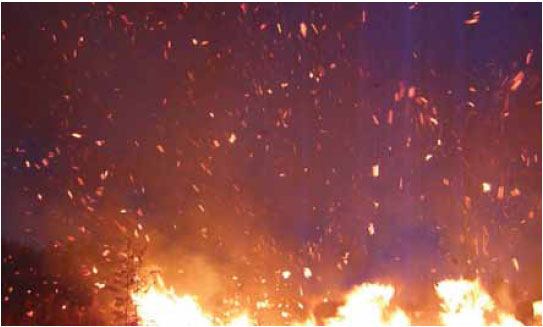
Photo B5.6 Showing hot sparks and embers that could lead to spot fires
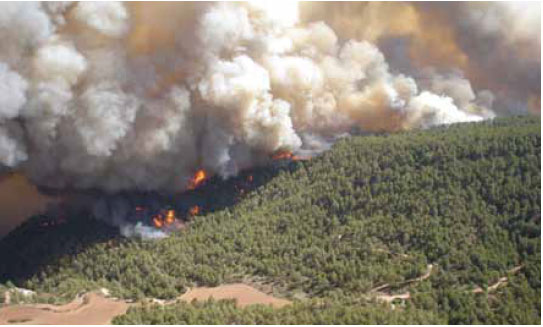
Photo B5.7 Showing short-range spotting behaviour and the dangers that this may present to firefighters on the ground
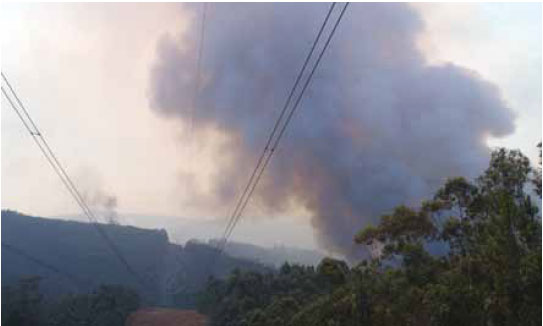
Photo B5.8 Showing a fire in the background that has been caused by long-range spotting
Torching
8B5.48 Torching is likely to occur in areas where there is vertical fuel arrangements (ladder fuels) present within the fuel complex; this can support fire spread that will move from the surface into the upper aerial fuels.
8B5.49 Torching is an event that is dependent on there being continuity within the fine fuel structure. This allows a fire to develop a strong upward motion. Torching is normally a localised event restricted to single trees or small clumps of trees.
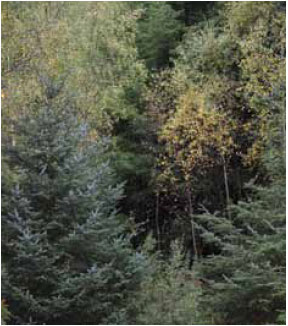
Photo B5.9 Showing ladder fuels within the vertical fuel arrangement
8B5.50 In areas where the upper canopy has sufficient horizontal fuel continuity this fire penetration into the upper canopy may be the precursor of crowning behaviour.
Crowning
8B5.51 The term crowning is used to describe a number of fire types that burn in the upper canopy of vegetation. For crowning to occur there is a reliance on there being sufficient and continuous fine fuel, these can be rapidly consumed resulting in a fast-moving and very intense fire. Crowning can occur in shrubs or trees, and intensities are usually dependent on the amount and condition of the fuel and the alignment that this is in. (Support from wind, slope and aspect)
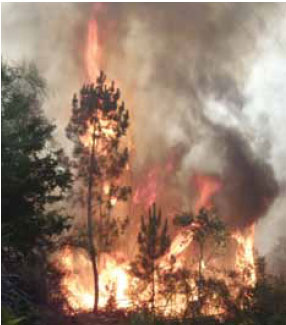
Photo B5.10 Showing a fire moving through the vertical fuel arrangement and demonstrating torching behaviour
Active Crown Fire
8B5.52 This is a fire type that establishes itself within the whole fuel complex but is reliant on a strong surface fire to transfer heat and flames into the aerial fuels.
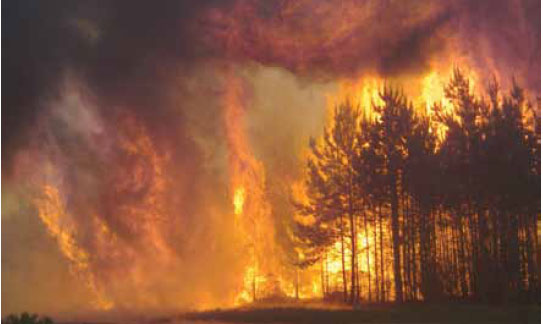
Photo B5.11 Showing active crown behaviour
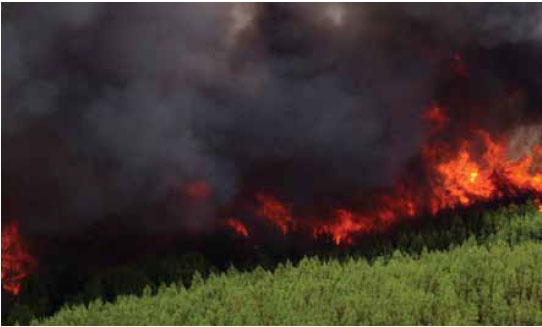
Photo B5.12 Showing extensive active crowning
Independent Crown Fire
8B5.53 An independent crown fire is one that burns within the aerial fuels and upper canopy and does not depend on a surface fire to support its development, as it can sometimes burn without involving surface fuels.
Passive Crown Fire
8B5.54 A passive crown fire burns from the surface into the aerial and canopy fuels but is unable to maintain forward motion at the upper fuel levels.
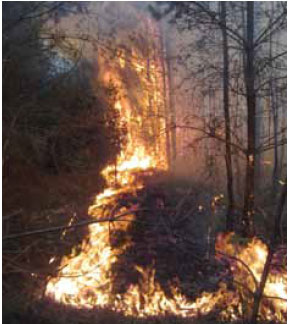
Photo B5.13 Passive crowning
Convection- or Plume-driven Fire
8B5.55 A convection-driven fire is one that is spread mainly by the convection plume. Heat is carried in the form of hot air and this dries out vegetation, which is then susceptible to ignition by hot brands or burning embers that are carried within the fire plume.
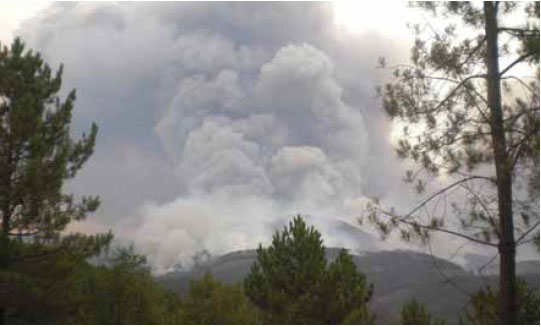
Photo B5.14 A convection-driven fire
The Six Factors which Influence the Fire Environment
8B5.56 As a conclusion to this chapter, emphasis is made to the six principal influences which, when supportive to the fire, will indicate an increase in intensity and rate of spread. Although these factors have been referenced previously, an awareness of their importance is essential to understanding the potential development and behaviour of a wildfire.
- The strength and type of wind
- Atmospheric stability
- Fuel and how it is arranged
- The temperature of the fuel
- Fuel moisture
- Topography
8B5.57 These factors, and other common situations which can influence and bring about changes to wildfire behaviour, are explained within 8B10 Safety at a Wildfire Incident.
8B5 Key Considerations
- Fire behaviour is the result of the interaction between the available fuel and its arrangement, the weather and the shape of the topography.
- Wind strongly influences fire behaviour and plays a significant role in a fire's development and expansion across the landscape.
- A prolonged drying period will dramatically increase surface and ground fuel loading leading
to increased fire intensities. - An ample and continuous supply of fine fuel will allow a fire to spread quickly.
- A surface fire can dry and heat the fuels located in the upper levels of the fuel arrangement.
- Crowning is not limited to trees, this type of behaviour can occur in shrub species such as heather and gorse.
- Spotting behaviour can lead to rapid fire spread and an increase in fire intensity.
- A fire that moves into a location where it is supported by wind and slope can burn with great speed and intensity.
- Observe the fire and how it burns, this will provide some understanding of how it will behave
in the future. - Base suppression tactics on expected fire behaviour; take advantage of areas where intensities will be lower.
- Fire behaviour is likely to be much less early in the morning and later in the evening and will generally reduce significantly during the hours of darkness.
- Understand which fuels are in aspect and are likely to be hotter and dryer.
- Most fire accidents occur due to an unexpected change in fire intensity, normally accompanied with an increase in its rate of spread. These events are normally a result of a fire changing its alignment with wind and slope or to changes to the fuel or its arrangement, identify where these changes are likely to occur and take proactive action.
Contact
Email: Dean Cowper
There is a problem
Thanks for your feedback